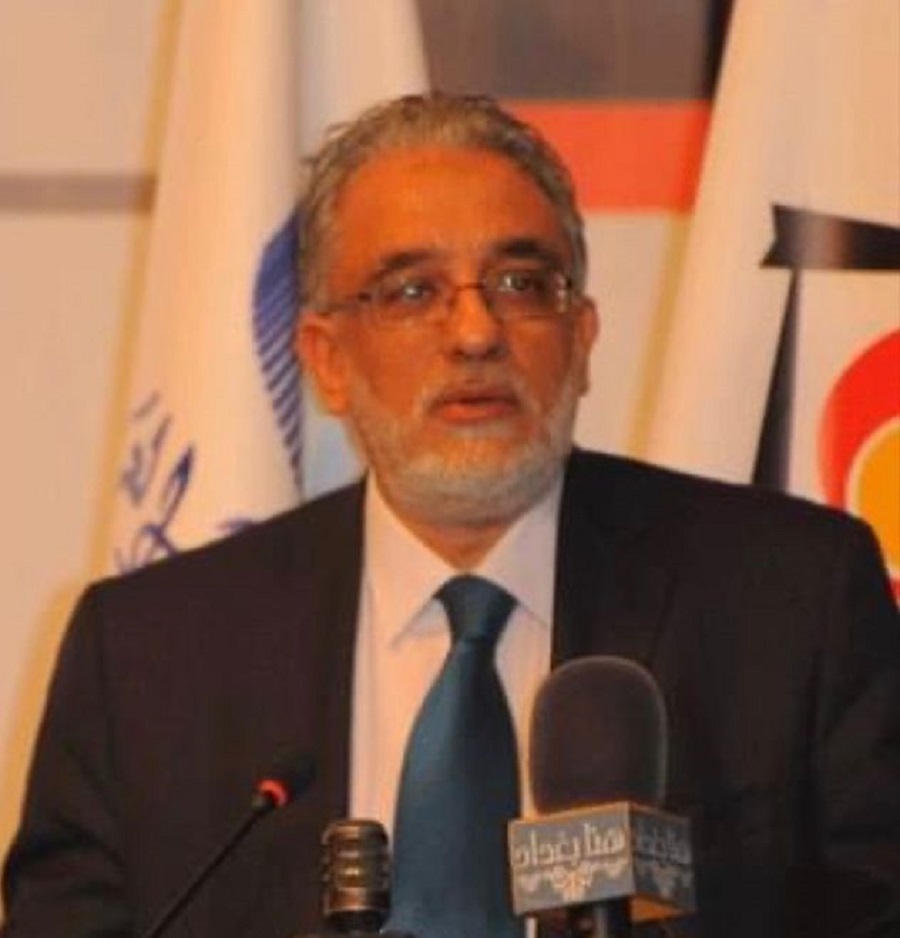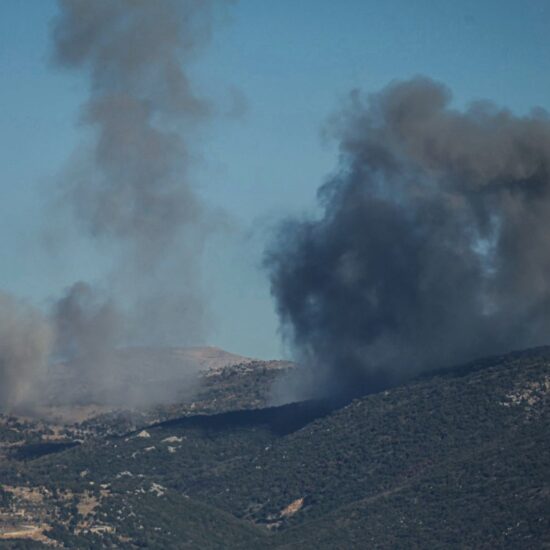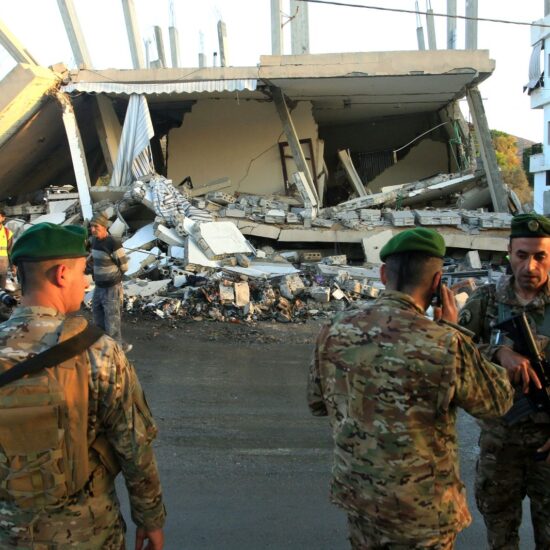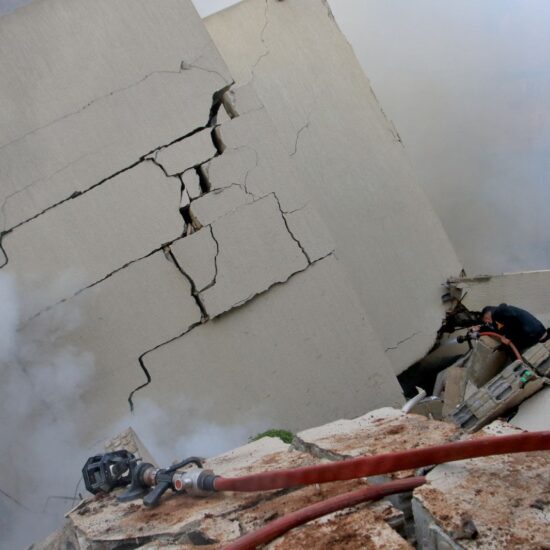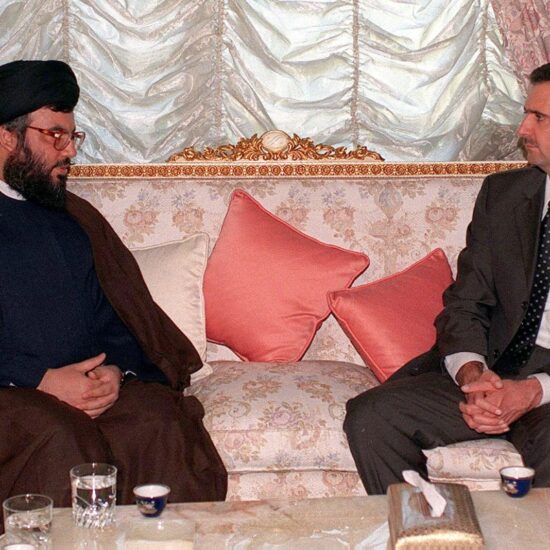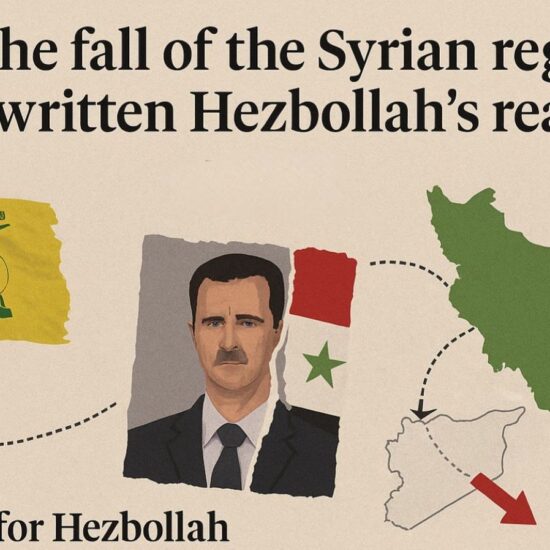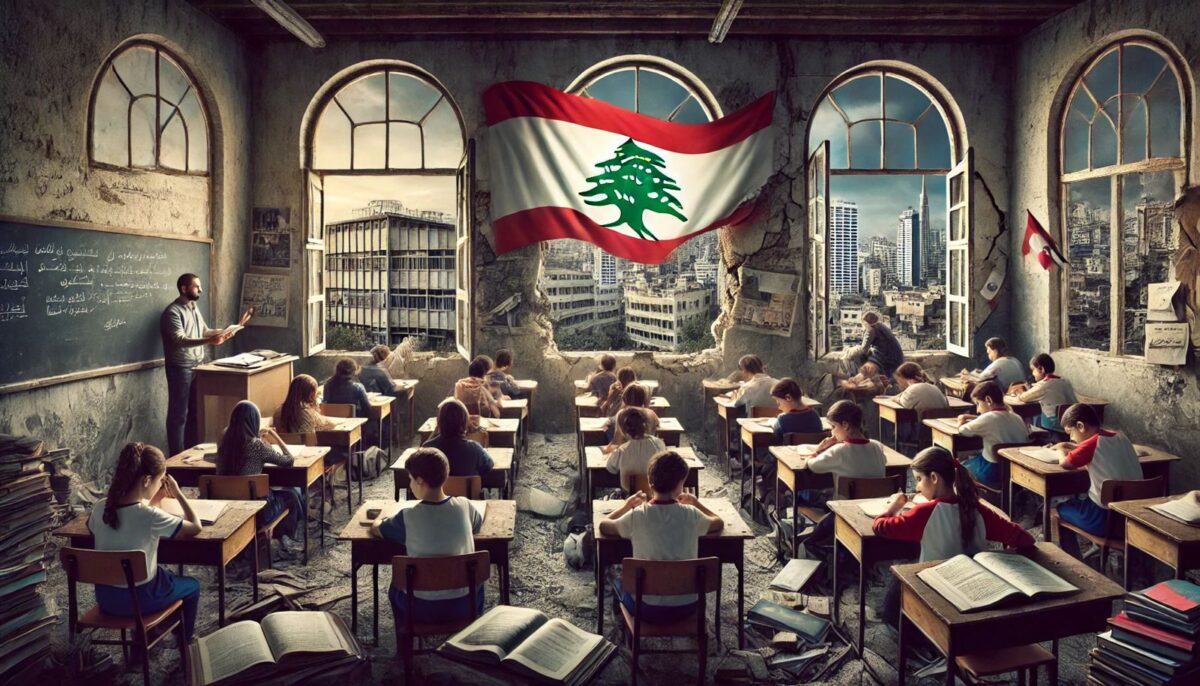
The government's insistence on a hasty return to normalcy, without addressing the underlying issues, is a recipe for disaster. Unless urgent measures are taken to improve school conditions, provide adequate resources, and support the mental health of students and teachers, the future of education in Lebanon remains bleak.
The Lebanese Minister of Education, in a bold move that has sent shockwaves through the nation, has insisted on the commencement of the new academic year on November 4th. This decision, made amidst a backdrop of crumbling infrastructure, economic turmoil, and social unrest, has sparked widespread criticism and skepticism. The Minister, ever the optimist, seems to believe that sheer force of will can overcome the myriad challenges facing the education sector. In a recent press conference, he extolled the virtues of perseverance and resilience, urging students and teachers alike to rise to the occasion. But the Caretaker Education Minister Abbas Halabi seems to be sending conflicting signals as well, he said that his ministry has “no intention” of evacuating displaced people sheltering in public schools in regions hit by Israeli strikes. He called for “alternatives” to ensure a proper start to the school year in the public sector on Nov. 4. More wishful thinking and signs of unacceptable vision from the minister experts charged.
As we sit here today, 1.2 million children are deprived of education. Their public schools have either been rendered inaccessible, have been damaged by the war or are being used as shelters. The last thing this country needs, in addition to everything else it has gone through, is the risk of a lost generation. To be noted is that hundreds of thousands of Lebanese, Syrian, Palestinian children are at risk of losing their learning, more than 2,300 people have been killed in Israeli strikes, nearly 75% of them over the last month, according to the Health Ministry. In the last three weeks, more than 100 children were killed and over 800 were wounded.
More disruptions on the horizon?
With the current state of affairs of the Israeli-Lebanese war and the plight of displaced and the occupation of public schools , many are questioning the practicality of this ambitious timeline.
In first days of the attack according to reports issued by the National Operations Room Platform data highlighted that more than 104,000 new displaced persons, of whom 43,600 are housed in the 347 schools used as collective shelters and 60,530 displaced persons who have found shelter in private homes. Some of the displaced people are still looking for accommodation and they’re taking temporary shelter in their cars and public areas. With schools still reeling from the effects of the previous year’s disruptions, it remains unclear how they will be able to adequately prepare for the influx of students in such a short timeframe. According to data from Save the Children at least 500 public schools – about half of Lebanon’s public schools – are now being used as collective shelters, following escalating violence on 23 September 2024 that led to the displacement of over 1.2 million people, or about one fifth of the population. This marks the sixth year of significant disruptions to education for children in Lebanon, with the World Bank estimating that it will take Lebanon generations to recover from these successive shocks to children’s education.
Save the Children said children in Lebanon have been hit by multiple complex crises for decades, without being able to fully recover, including the COVID-19 pandemic, political instability, the Beirut port explosion, economic downturns and the teachers’ strike in 2023.
Since October 2023, escalating hostilities have resulted in over 2,000 people being killed, including about 127 children, and at least 10,000 injured in Lebanon.
According to IOM Displacement Tracking Matrix (IOM DTM), a total of 988 people were displaced to Matn District, Mount Lebanon due to hostilities at the southern Lebanese border between 17 October and 21 October 2024 and a total of 850 people were displaced to Zahle District, Beqaa due to hostilities at the southern Lebanese border between 17 October and 21 October 2024.
Relief web quoted that to date, the escalation has resulted in the closure of around 72 schools, including 34 first shift public schools, 8 second shift public schools for Syrian refugees, 8 Technical and Vocational Education and Training Institutes (TVET), and around 22 private schools, impacting 20,000 children.
Since Israel expanded its war to Lebanon in early October, “75% of the schools are out of service and 45,000 teachers are unable to reach their workplaces or are displaced from their regions according to data from the Centre for Educational Research and Development.
Those stats underline that about 546,000 students have been displaced from their schools, homes, and communities.
An ailing sector
Even if the schooling year start soon teachers are overwhelmed, classrooms are expected to be overcrowded, and essential resources will be scarce. The sector already suffers from a chronic need to increasing the productivity of existing and incoming teachers by improving and enforcing policies on teachers’ teaching and specifying teachers’ working hours; and implementing improved planning and deployment processes, so that existing teachers in the system are used to their full capacity before additional teachers are hired; and
In Lebanon, the Ministry of Education and Higher Education (MEHE) is the second largest employer in the public sector. The recent economic crisis in the country has led to a severe erosion of public sector salaries. As a result, many civil-servant teachers have left the sector, while others are in the process of retiring in the coming few years. Further, some existing policies and traditions undermine the provision of quality education, such as the system of automatically promoting civil servants, the policy on decreasing teaching hours after 20 years of service (meaning civil-servant teachers are paid more for teaching less, regardless of performance), the influence of the confessional political system, and the interference of politics in the teacher hiring process.
The public education sector has become increasingly reliant on contractual hiring. From 2011 to 2017, the number of contractual teachers in the public sector increased by 123 percent. The number of contractual teachers further increased after the hiring freeze came into effect in 2017 (Law No. 46 dated 21/8/2017). While the hiring freeze was lifted per Budget Law 2022, the last round of competitive hiring at the Civil Service Board was in 2010 for primary school teachers and in 2017 for secondary school teachers. In the 2022–23 academic year, the primary and secondary education teaching workforce consisted of 42.6 percent civil-servant teachers and 57.4 percent non-civil-servant teachers.
Against this backdrop, students in Lebanese public schools have been facing disruptions to schooling since 2019. The current academic year (2023–24) is the first uninterrupted year since the academic year 2019–2020, yet even now students are still receiving less instruction time than usual, with a shortened school year and only 4 days of instruction per week. While disruptions to the 2019–2020 and 2020-2021 academic years were due to force majeure such as the COVID-19 pandemic, disruptions to the 2021–2022 and 2022–2023 academic years were primarily due to rising transportation costs and public-school teacher strikes in the face of the drastic devaluation of their salaries.
Inadequate response from the Ministry
The Lebanese government, ever the champion of the absurd, has once again outdone itself. As another academic year dawns, the nation’s students and teachers find themselves in a state of perpetual limbo, caught between the twin evils of incompetence and indifference.
With a population of roughly 6.8 million, Lebanon boasts a student body of approximately 1.2 million, spread across a network of public and private schools. However, this seemingly promising statistic belies the grim reality facing the country’s education system.
According to World bank data the core efficiency/cost-saving cluster of teacher utilization in the first shift of the public education sector, revealed that the student-teacher ratio (STR) in Lebanon is lower than OECD averages, particularly at secondary level. The national STR is 13 to 1 in primary and 6 to 1 in secondary, compared with the OECD average of 15:1 in primary and 13:1 in secondary.
Lebanon has historically had low student-teacher ratios (STRs). While a lower STR (indicating fewer students per teacher) is typically perceived as more beneficial for learning outcomes, evidence linking lower STRs and student performance is mixed, the report quoted. Furthermore, the STR has a significant impact on education sector budgets through teacher salary costs. There is a significant number of non-civil servant teachers with a low number of contracted teaching hours per week. This is especially the case at the secondary level, where 50% of non-civil-servant teachers are contracted to teach 7 hours a week or less.
Therefore, any potential benefit of policies leading to a lower STR and its associated cost needs to be weighed against the benefits of other investments in the education sector. In Lebanon, low STRs have not translated into adequate student learning outcomes.
The government’s latest grand plan for the new school year is nothing short of a comedic masterpiece. As schools grapple with overcrowding, dilapidated infrastructure, and a chronic shortage of resources, the Ministry of Education has decided to embrace the tried-and-true method of “winging it.”
In a move that would make even the most seasoned improvisational comedian proud, the government has opted to rely on the ever-reliable internet as the primary mode of instruction. This, of course, is despite the fact that Lebanon’s internet infrastructure is as stable as a Jenga tower built by a toddler. Frequent outages, slow speeds, and exorbitant costs have become the norm, rendering online learning a frustrating and often impossible endeavor.
But fear not, dear students, for the government has a solution to every problem. If the internet fails, we can always resort to good old-fashioned textbooks, right? Of course, these textbooks will be printed on the finest quality recycled paper, sourced from the depths of the Bekaa Valley. And don’t forget the accompanying workbook, which will be filled with mind-bending puzzles and thought-provoking questions, guaranteed to keep you entertained for hours on end.
To add insult to injury, teachers across the country are threatening to strike once again, demanding better working conditions and fair wages. As if students didn’t have enough to worry about, now they must also contend with the possibility of their education being disrupted by yet another labor dispute.
And let’s not forget the plight of the countless refugee children who have been forced to flee their homes and seek refuge in Lebanon. These young souls, already traumatized by war and displacement, are now facing the daunting task of trying to learn in overcrowded classrooms, often without adequate resources or support.
So, as the new school year kicks off, it’s clear that the Lebanese government has once again failed to deliver on its promises. Instead of investing in education, they have chosen to prioritize political bickering and self-enrichment. The result is a generation of students who are being shortchanged, their futures jeopardized by the incompetence and corruption of their leaders.
Where do we go from here?
Existing barriers to education – including financial constraints, child labor, de-prioritization of education at the household level, caregivers’ fear of sending their children to schools, and repeated or multiple displacements – are exacerbated during Lebanon crises. Children engaged in online learning face significant obstacles, such as technical issues, digital literacy gaps, and concerns over data privacy and security. Additional barriers include feelings of isolation, increased mental health and well-being concerns, and accessibility issues for students with disabilities. Engagement of parents and caregivers is crucial to ensure children continue to learn despite these challenges. Furthermore, the social and emotional well-being of students has been largely overlooked. The ongoing economic crisis has taken a toll on families, leading to increased stress, anxiety, and depression. Many students are struggling to cope with the pressures of academic life, while others are forced to work to support their families.
As the November 4th deadline looms, it is clear that the Lebanese education system is teetering on the brink of collapse. The government’s insistence on a hasty return to normalcy, without addressing the underlying issues, is a recipe for disaster. Unless urgent measures are taken to improve school conditions, provide adequate resources, and support the mental health of students and teachers, the future of education in Lebanon remains bleak.
Maan Barazy is an economist and founder and president of the National Council of Entrepreneurship and Innovation. He tweets @maanbarazy.
The views in this story reflect those of the author alone and do not necessarily reflect the beliefs of NOW


